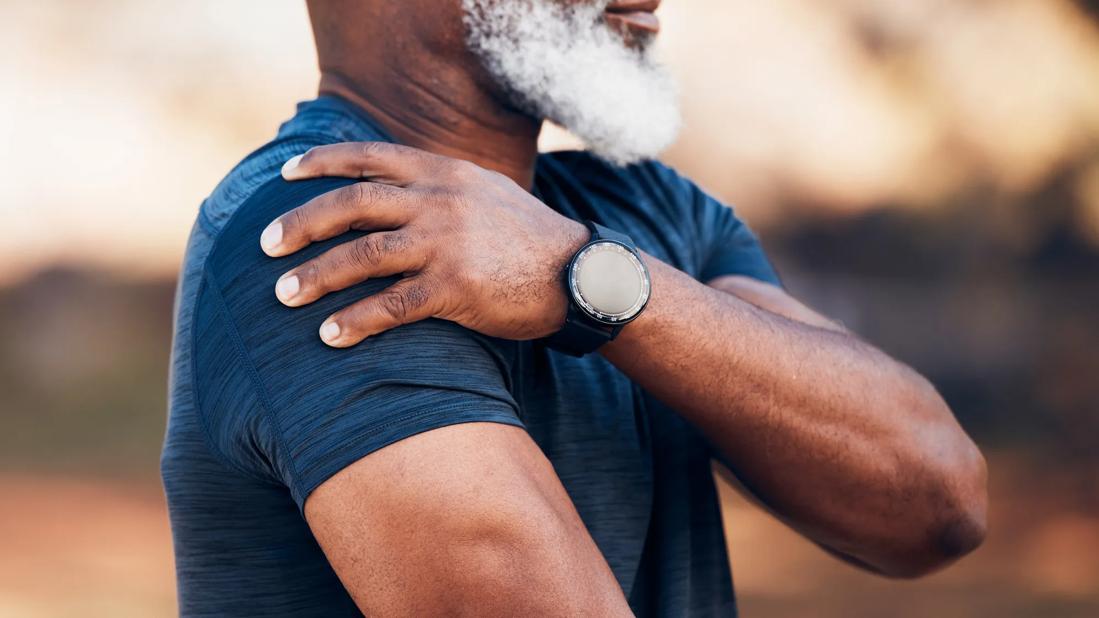Both are forms of tendinopathy, but one is more of an acute injury caused by inflammation, while the other is the result of degeneration over time

Whether it’s a knee, elbow, shoulder, hip or ankle, nagging tendon pain can stop you in your tracks. And maybe this isn’t the first time it’s happened. Or maybe it just doesn’t seem to get better. You’re ready to chalk it up to another bout of tendonitis — but is that what it really is? Maybe it’s tendinosis.
Advertisement
Cleveland Clinic is a non-profit academic medical center. Advertising on our site helps support our mission. We do not endorse non-Cleveland Clinic products or services. Policy
Both painful conditions are forms of tendinopathy, a broad term for any tendon pain and swelling. Tendon issues are very common, but they aren’t all caused by the same problems. Tendonitis (also spelled “tendinitis”) is a more acute injury caused by inflammation. Tendinosis (sometimes spelled “tendonosis”), on the other hand, is the result of degeneration over time and usually takes longer to resolve.
You have thousands of tendons in your body. These thick, fibrous cords attach to your muscles and bones to help them move as your muscles tighten and relax. They usually help prevent muscle injuries by absorbing some of the impact from running, jumping and other movements. They’re resistant to tearing but aren’t stretchy. So, they can get injured easily — and can heal slowly.
Tendon issues are very common, but they aren't all caused by the same problems. Sports medicine physicians Dominic King, DO, and Jason Genin, DO, treat them daily. But do you know which of the two conditions is causing your pain?
“It’s important to distinguish between the two conditions because the ultimate treatment can be very different,” Dr. King notes.
It might be hard to tell at first glance — or ache — what’s going on. Tendinitis and tendinosis often look (and feel) similar. When you’re trying to remember if you have tendonitis or tendinosis, remember that the “itis” in tendonitis means inflammation.
Advertisement
When you have tendonitis, you have a swollen, painful tendon without microscopic damage. Athletes often experience tendonitis, but it’s not limited to sports injuries. This inflammation can start from:
Tendinosis means there is degeneration. And “osis” typically refers to something abnormal or a more serious condition. Tendinosis is tendon damage that doesn’t improve or gets worse. It happens when the tendon’s flexible, protein-filled collagen fibers break down, or degenerate. The tendon gets hard, thick, scarred and rubbery — and won’t bounce back. Some damage may only be visible under a microscope. Tendinosis can start from:
Both tendonitis and tendinosis can pop up anywhere you have tendons. Common spots are:
You can also have tendinopathy in your wrists, fingers, biceps and feet.
Despite causing pain in the same spots on your body, tendonitis and tendinosis have distinctly different symptoms in the affected area. The pain from a tendon issue can come on gradually, building up over time, or it can feel sudden and severe.
Common tendonitis signs are:
Signs of tendinosis include:
When you have tendinosis, you sometimes may also get a tender lump in the affected area.
Both conditions are easy to pinpoint using simple tests. A provider may check how well you can move the injured area and how strong it is. They may also do an ultrasound.
“An ultrasound can easily detect the swelling and inflammation of tendonitis. It can also flag the chronic degenerative changes caused by tendinosis,” Dr. Genin explains.
Tendonitis care focuses on reducing inflammation and preventing further damage.
When you get tendinosis treatment, your providers will work to repair the damage that’s built up over time.
For either condition, your healthcare provider may recommend taking over-the-counter pain medication. This could be acetaminophen (Tylenol®), ibuprofen (Advil® or Motrin®) or naproxen (Aleve®). They’ll also suggest care tips for tendonitis and tendinosis like:
Advertisement
If you have tendonitis, you may also need corticosteroid injections. For tendinosis, you may need more in-depth care like:
No matter what injury you have, one thing is certain. You’ll want to get medical care when you first start noticing symptoms. Tendonitis can often be cleared up quickly, usually within six weeks.
“If the pain hasn’t subsided by then, you will want to see a doctor,” Dr. King says.
Tendinosis may need comprehensive, longer-term care — months rather than weeks. Especially if you need surgery. That’s why seeing a healthcare provider quickly is important.
You’re probably ready to get back into the game as soon as possible. Understanding which injury you have — and how to care for it — is the first step in making that happen.
Advertisement
Learn more about our editorial process.
Advertisement

Tendinopathy tends to get better with rest, ice, pain management and physical therapy

You can improve your athletic performance over time by breaking up your workout regimen into focused cycles

Start training with full-body workouts at least six to eight weeks before you hit the slopes

Physical activity can help preserve and improve your cognitive function and fend off dementia, stroke and other health concerns

Lower-intensity workouts can deliver high-quality health and fitness results

Incremental changes in your exercise routine can improve your strength and endurance over time

Understanding heart rate zones can help you tailor your workout to reach your goals

Increase the size of your muscles by bulking up on protein and focusing on slow, intense movements with progressive overloading

The best parenting style balances enforcing rules and showing plenty of love

Tips include cutting back on sugar, focusing on exercise and managing stress

It can be harder to let go when you’ve invested time, energy and emotions — but it might be the healthier choice long term